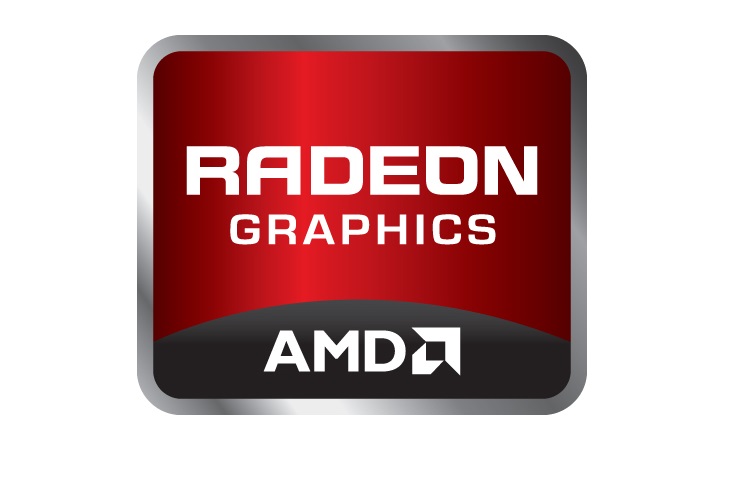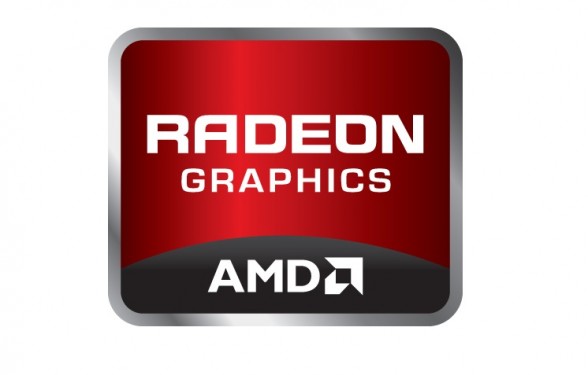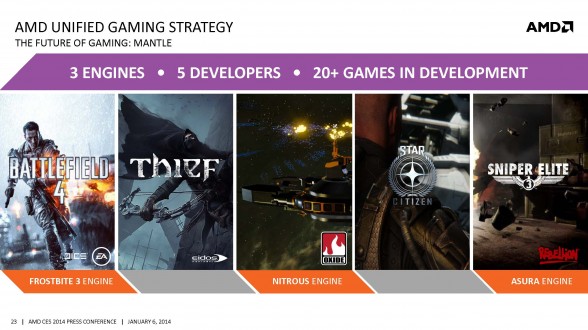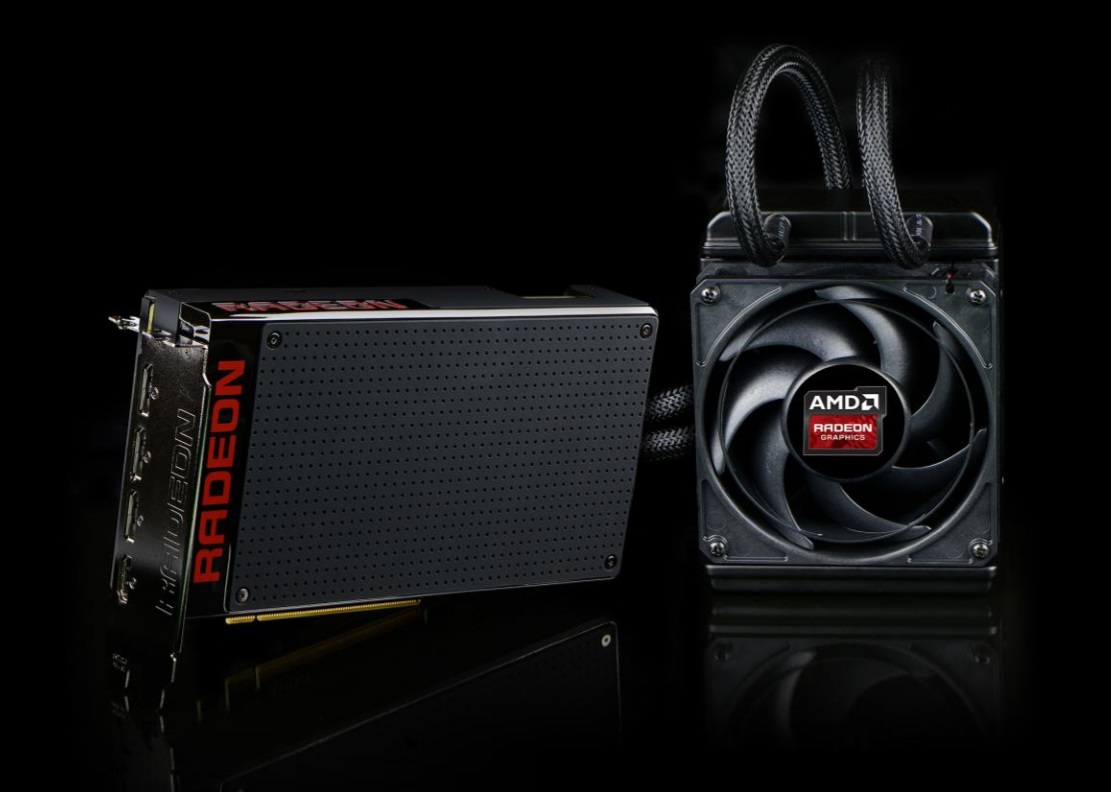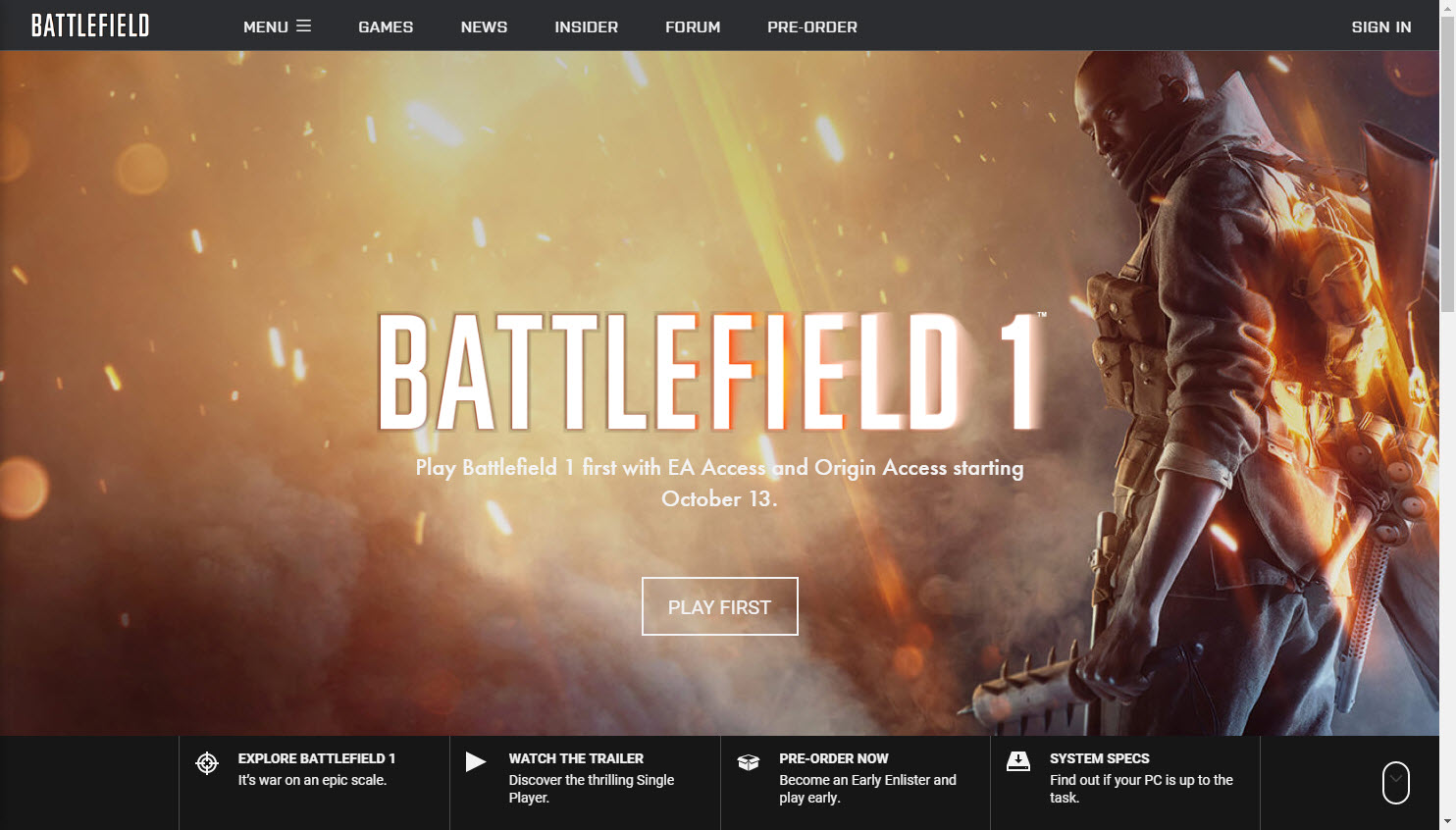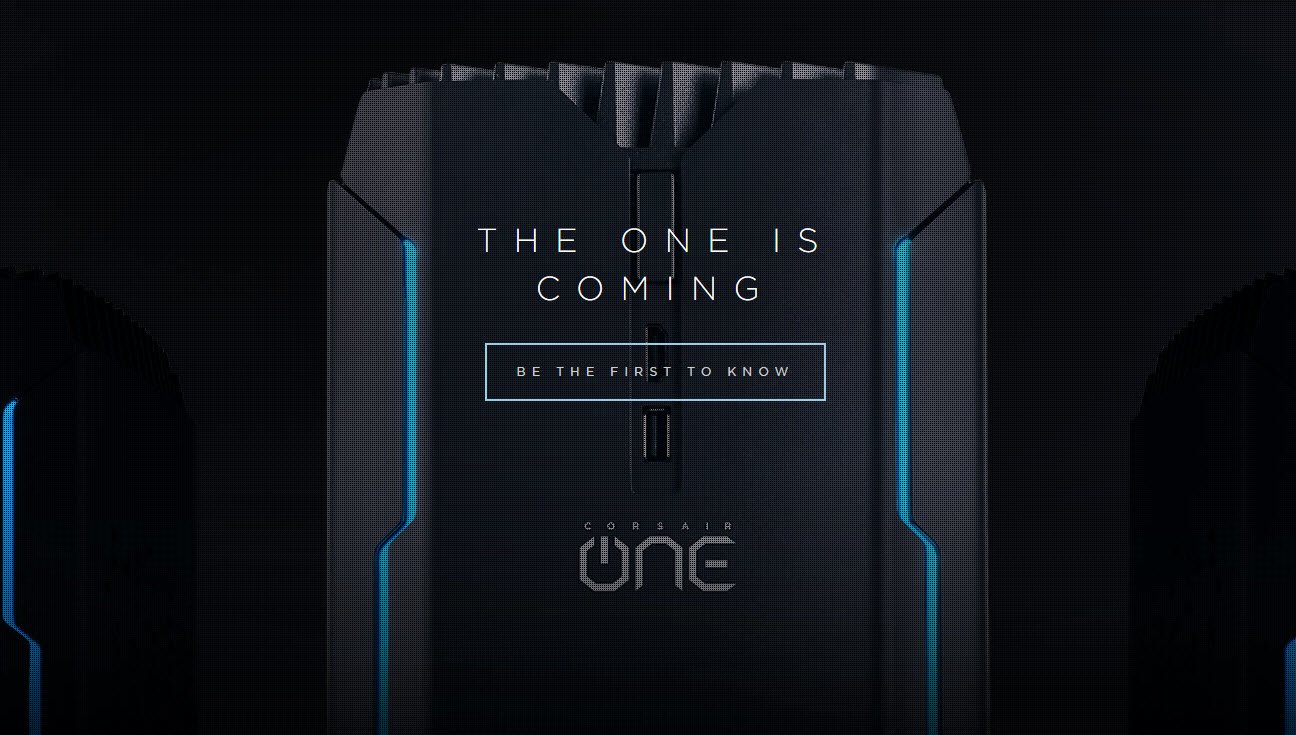It’s finally here
AMD has recently announced that they’ll be delivering on their promise for a January launch of the Mantle API, which will be arriving sometime today along with the release of the Catalyst 14.1 Beta Driver. Along with Mantle, the Catalyst 14.1 Beta driver will also include a frame pacing issue fix for non-XDMA GPUs (Hawaii class), initial HSA support for Kaveri APU users, and a few other fixes as well.
Mantle API
The biggest update in Catalyst 14.1 Beta is of course AMD’s first release of the Mantle API to the public. For those who remember AMD’s launch of the Hawaii GPUs last year, AMD also announced the Mantle API, which is a custom low level API AMD claims will allow game developers better capability of optimizing their games to hardware – in this case, AMD graphics hardware. Given that a low level API allows developers to bypass a lot of the overhead introduced by a high level API such as DirectX or OpenGL, Mantle is expected to provide huge gains, especially for those running on lower end hardware.
Now AMD did provide a couple benchmarks for us to take a look at, but it’s definitely not quite what we expected.
In Battlefield 4, AMD claims that…
- AMD A10-7700K + AMD Radeon R9 290X (Low/Mid-Tier CPU, High End GPU)
- 1080p (Ultra Settings, 4x AA) – 40.9% Improvement with Mantle
- 1600p – (Ultra Settings, 4xAA) – 40.1% Improvement with Mantle
- Intel Core i7-4960X CPU + AMD Radeon R7 260X GPU (High End CPU, Low End GPU)
- 1080p (Ultra Settings, FXAA) – 2.7% Improvement with Mantle
- 1600p – (Ultra Settings, FXAA) – 1.4% Improvement with Mantle
In StarSwarm, AMD claims that…
- AMD A10-7700K + AMD Radeon R9 290X (Low/Mid-Tier CPU, High End GPU)
- 1080p (Extreme Settings) – 319% Improvement with Mantle
- 1600p – (Extreme Settings) – 281% Improvement with Mantle
- Intel Core i7-4960X CPU + AMD Radeon R7 260X GPU (High End CPU, Low End GPU)
- 1080p (Extreme Settings) – 5.1% Improvement with Mantle
- 1600p – (Extreme Settings) – 16.7% Improvement with Mantle
While AMD did release a couple more benchmarks, the benchmarks above pretty much sums up what Mantle actually does. It was originally believed that Mantle makes it easier for developers to optimize games for lower end graphics hardware, but it seems like what Mantle actually does is optimize games to better take advantage of the CPU.
Where Mantle gets its biggest gains is in CPU limited systems where you have a lower end CPU such as the AMD A10-7700K paired with a higher end GPU such as the AMD Radeon R9 290X. In that situation, you get the possibility of up to 319% performance gains. On the other hand in scenarios where you get a higher end CPU such as the Intel Core i7-4960X combined with a lower end GPU such as the AMD Radeon R7 260X, performance gains are as low as 1.4%. Given that AMD isn’t necessarily all that interested in competing against Intel in the higher end CPU market, this starts to make a whole lotta sense. AMD can compensate for lower CPU performance by using the Mantle API. Of course, it also opens up a lot of doors for mainstream PC users who may or may not always have Core i5’s and Core i7’s, but want to drop in a GPU to play some of the latest games on the market.
AMD is making it clear that Mantle is still in the beta phase. In the launch driver, AMD says Mantle CrossFire support is still iffy, and Mantle performance isn’t 100% optimized for Battlefield 4 quite yet, but will be addressed in future updates. Of course, remember the game and your GPU must support Mantle in order to take advantage of Mantle. This means you’ll need Battlefield 4 with the Mantle update (the only game with Mantle support at the moment), the AMD Catalyst 14.1 Beta driver, and an AMD GCN based GPU (AMD Radeon R7, R9, or HD 7000 series).
Frame Pacing Fix Phase 2
A second major-ish update in Catalyst 14.1 is for those running CrossFire systems experiencing the frame pacing issue. This new fix, known as frame pacing fix phase 2, mainly fixes frame pacing for AMD’s non-XDMA GPUs such as the R9 290 and R9 290X, aka Hawaii class GPUs. It also fixes frame pacing in situations where users are playing games on single monitors with resolutions of greater than 2560×1600, it now works on DX10 as well as DX11, and it fixes frame pacing in scenarios where an APU is CrossFired with a dedicated GPU.
HSA Support
The last one’s pretty small, but it now enables HSA support for Kaveri APUs so applications that support the feature can use both the CPU and GPU compute capability to accelerate an application. This currently includes stuff like LibreOffice, some Adobe apps, and some Corel apps, but the catalog of HSA supported apps is expected to increase down the line.
Final Thoughts
Without actually being able to test Mantle for myself just yet, it’s difficult to really say what we can expect. However from what we’ve see here, Mantle looks like something that will allow AMD to compensate for their deficiencies in the high end CPU arena. Obviously AMD probably won’t be competing with Intel when it comes to highly CPU bound applications (at least in this generation), but Intel doesn’t have the type of GPU division that AMD does, and with AMD leveraging that to their benefit, it could give AMD the leg up that they need, especially in the larger low-end/mainstream markets.
The AMD Catalyst 14.1 Beta driver is expected to be available at AMD’s website sometime today.

